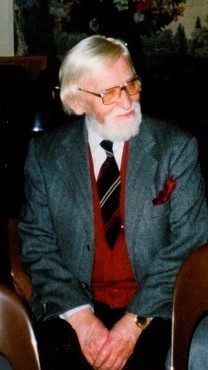Max Rostal facts for kids
Quick facts for kids
Max Rostal
|
|
|---|---|

Max Rostal, 1988
|
|
| Background information | |
| Born | 7 July 1905 Teschen, Austria-Hungary |
| Died | 6 August 1991 (aged 86) Bern, Switzerland |
| Genres | Classical |
| Occupation(s) | Violinist |
| Instruments | Violin, viola |
Max Rostal (born July 7, 1905 – died August 6, 1991) was a very talented musician. He played both the violin and the viola. Max was born in Austria, but he later became a citizen of Britain.
Contents
About Max Rostal
Max Rostal was born in a town called Cieszyn. His family was Jewish and worked as merchants. Max was a child prodigy, which means he was incredibly skilled at something from a very young age. He started learning the violin when he was just 5 years old. By 1913, he was playing music for Emperor Franz Josef I himself!
Max studied music with famous teachers. One of his main teachers was Carl Flesch, who was a well-known violinist. He also learned about music theory and how to compose music from Emil Bohnke and Matyás Seiber. In 1925, he won the Mendelssohn Scholarship, which is a special award for talented musicians.
Max Rostal also became a respected teacher. From 1930 to 1933, he taught at the Berlin Hochschule. Later, from 1944 to 1958, he taught at the Guildhall School of Music in London. He then taught in Cologne from 1957 to 1982 and in Bern from 1957 to 1985. Many of his students became famous musicians, including members of the Amadeus Quartet. In 1945, he helped start the Carl Flesch International Violin Competition. This competition honors his former teacher, Carl Flesch.
Max Rostal enjoyed playing many different kinds of music. He was especially known for supporting new music by composers of his time. For example, he was a big fan of Béla Bartók's Violin Concerto No. 2. He also made many recordings of his performances. Max was the first to play Alan Bush's Violin Concerto in 1949. He also premiered and recorded the first solo violin sonata by Benjamin Frankel. Another composer, Bernard Stevens, wrote a violin concerto especially for Max in 1943.
Max also played in a piano trio, which is a small group with a piano, a violin, and a cello. He played with Heinz Schröter on piano and Gaspar Cassadó on cello. Later, Siegfried Palm took over as the cellist. Max also helped edit many musical works for a company called Schott Music. He even created simpler piano versions of some pieces.
Max Rostal's daughter, Sybil B. G. Eysenck, became a psychologist. She was married to another famous psychologist, Hans Eysenck, and they worked together. Max Rostal passed away in Bern, Switzerland.
Recordings
Max Rostal made many recordings of classical music. Here are some of the famous pieces he recorded:
- Benjamin Frankel: Sonata No. 1 for solo violin.
- Frederick Delius: Violin Sonata No. 2.
- Sir Edward Elgar: Violin Sonata.
- Sir William Walton: Violin Sonata.
- Maurice Ravel: Sonata for Violin and Piano.
- Marcel Mihalovici: 2nd Sonata for Violin and Piano.
- Violin concertos by Béla Bartók (No. 2), Alban Berg, Bernard Stevens, and Dmitri Shostakovich (No. 1).
- Franz Schubert: Fantasie in C major.
- Robert Schumann: Sonata in A minor.
- Claude Debussy: Sonata.
- Igor Stravinsky: Duo Concertant.
- Johann Sebastian Bach: Sonata in E minor.
- Heinrich Ignaz Franz von Biber: Passacaglia.
- Giuseppe Tartini: Concerto in G minor and Sonata The Devil's Trill.
- Ludwig van Beethoven: Romances No. 1 and 2.
- More works by Franz Schubert, including 3 Sonatas and a Rondo.
Media
- European Archive You can listen to a recording of Beethoven's Kreutzer sonata played by Max Rostal (violin) and Franz Osborn (piano) here.
See also
 In Spanish: Max Rostal para niños
In Spanish: Max Rostal para niños 
- List of composers who moved to Britain

